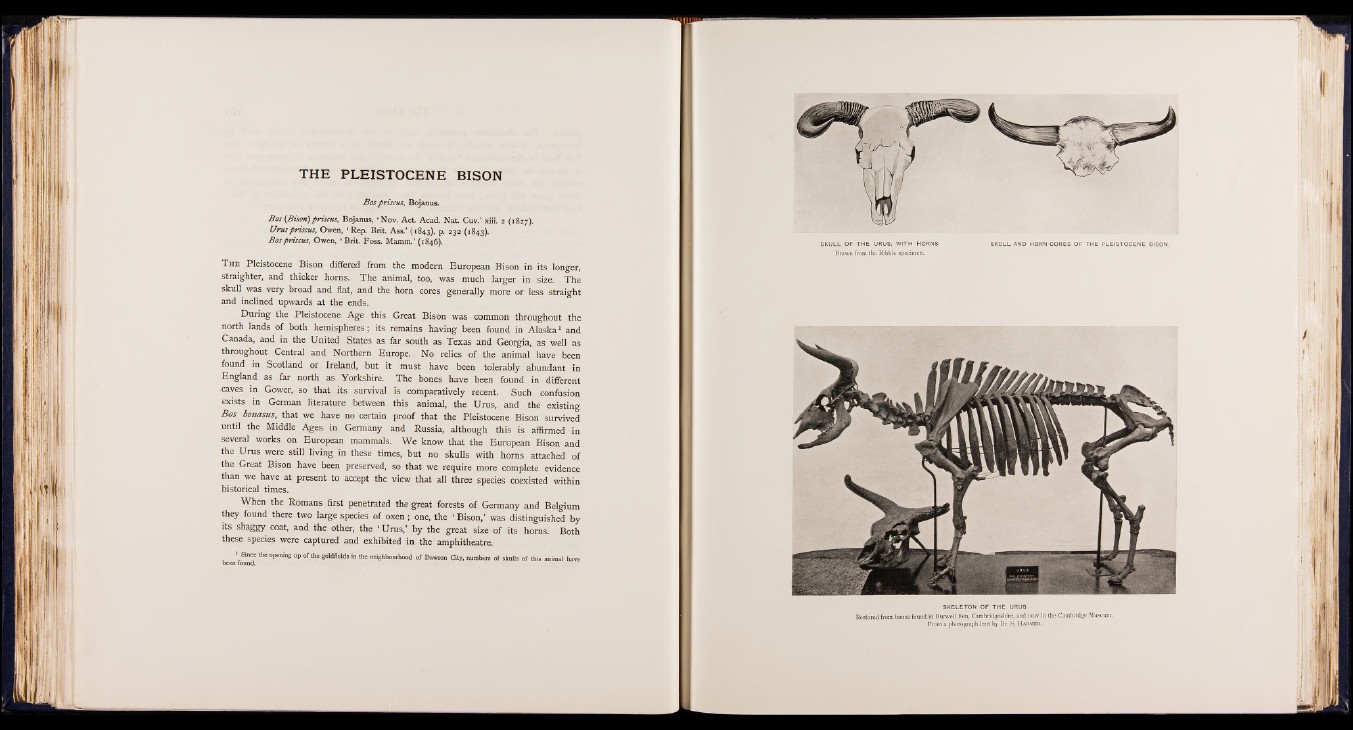
THE PLEISTOCENE BISON
B os prisons, Bojanus.
B os (B ison )prisons, Bojanus, ‘ Nov. A c t Acad. Nat. Cuv.’ xiii. 2 (1827).
Urns prison s, Owen, ‘ Rep. Brit. Ass.’ (1843), P- 232 (1843).
B os prisons, Owen, ‘ Brit. Foss. Mamm.’ (1846).
T he Pleistocene Bison differed from the modern European Bison in its longer,
straighter, and thicker horns. The animal, too, was much larger in size. The
skull was very broad and flat, and the horn cores generally more or less straight
and inclined upwards at the ends.
During the Pleistocene Age this Great Bison was common throughout the
north lands of both hemispheres; its remains having been found in Alaska1 and
Canada, and in the United States as far south as Texas and Georgia, as well as
throughout Central and Northern Europe. No relics of the animal have been
found in Scotland or Ireland, but it must have been tolerably abundant in
England as far north as Yorkshire. The bones have been found in different
caves in Gower, so that its survival is comparatively recent. Such confusion
exists in German literature between this animal, the Urus, and the existing
B °s bonasus, that we have no certain proof that the Pleistocene Bison survived
until the Middle Ages in Germany and Russia, although this is affirmed in
several works on European mammals. We know that the European Bison and
the Urus were still living in these times, but no skulls with horns attached of
the Great Bison have been preserved, so that we require more complete evidence
than we have at present to accept the view that all three species coexisted within
historical times.
When the Romans first penetrated the great forests of Germany and Belgium
they found there two large species of oxen ; one, the ' Bison,1 was distinguished by
its shaggy coat, and the other, the ‘ Urus,’ by the great size of its horns. Both
these species were captured and exhibited in the amphitheatre.
1 Since the opening up of the goldfields in the neighbourhood of Dawson City, numbers of skulls of this animal have
been found.
SKELETON OF THE URUS.
Restored from bones found in Burwell Fen, Cambridgeshire, and now in the Cambridge Museum.
From a photograph lent by Dr. S. Harmer.